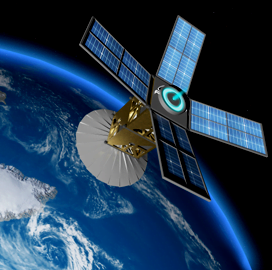
Space connectivity
NASA Develops Space Mission Connectivity Protocol With Automatic Information Delivery
NASA has developed a communications networking protocol for automatic information delivery that will be used for Artemis missions.
The Delay Tolerant Networking protocol uses a “store-and-forward” process to ensure that information will be delivered regardless of signal difficulties. DTN would either forward data as it is received or store it for future transmission in case of signal disruption, NASA said.
NASA’s Glenn Research Center has developed an advanced DTN implementation through the High-Rate Delay Tolerant Networking project. The implementation was able to transfer data four times faster than available data management protocols.
Daniel Raible, the principal investigator for the HDTN project, said high-rate DTN will take advantage of new laser and radio frequency technologies to improve data transfer in space.
The HDTN project, which is funded by NASA’s Space Communications and Navigation program, is working with the International Space Station Joint Station Local Area Network team to demonstrate high-rate DTN aboard the station.
NASA and its partners tested space connectivity in 2022. In August, Planet Labs demonstrated how its real-time space-to-space connectivity solutions could support communications between satellites used for NASA’s Communications Services Project.
In May, NASA awarded Telesat Government Solutions a $30.7 million Funded Space Act Agreement to evaluate commercial satellite communications services that would replace the Tracking and Data Relay Satellite system, which provided near-constant communication relay links between ground facilities and sub-geosynchronous-orbit satellites.

Category: Space




